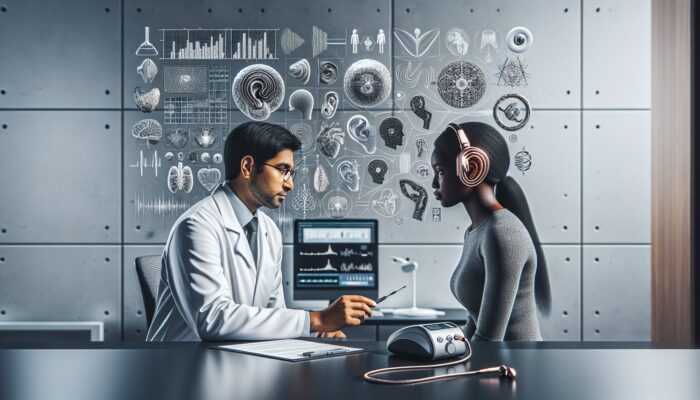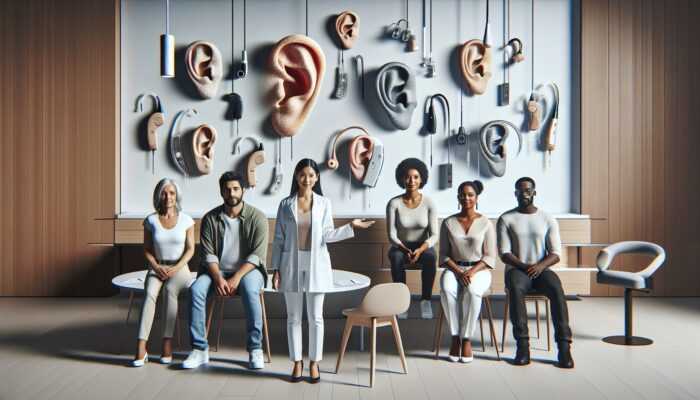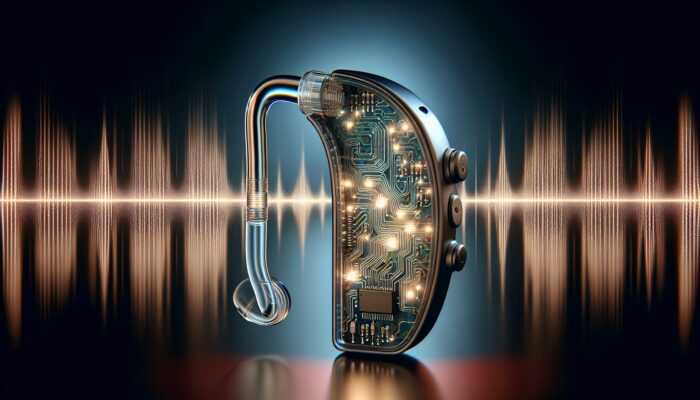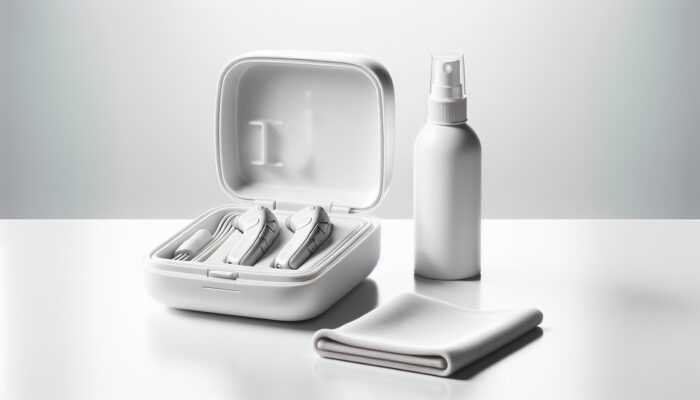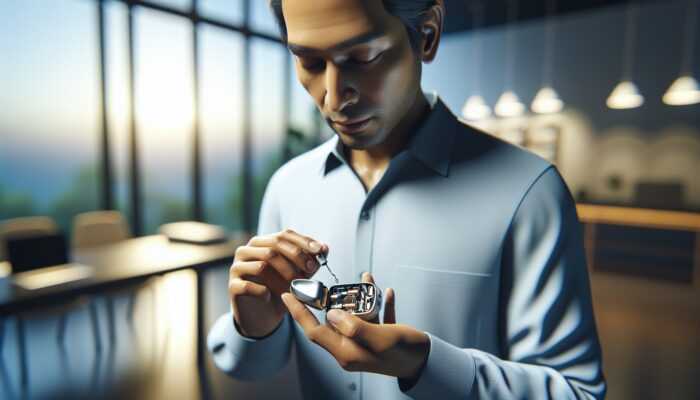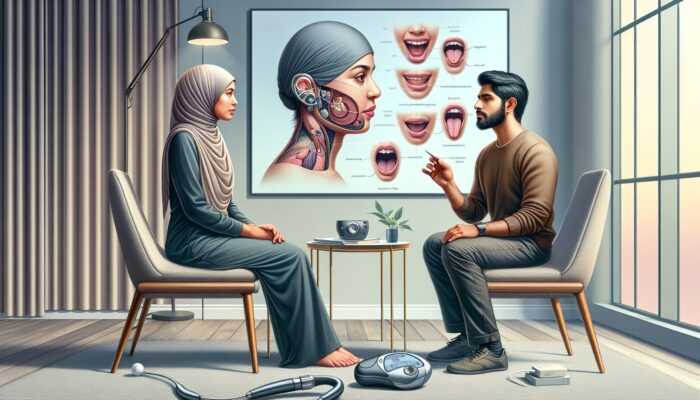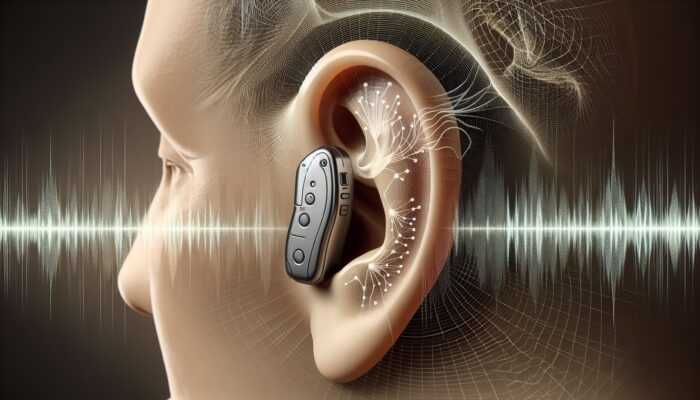Comprehensive Insights into Mild Hearing Loss
Defining Mild Hearing Loss and Recognizing Its Symptoms

Experiencing mild hearing loss often manifests as a subtle yet significant challenge, where the gentle sounds that enrich our lives seem to fade away. This condition is technically categorized within a hearing loss range of 26 to 40 decibels, which can lead individuals to frequently misinterpret soft-spoken words or miss key elements in conversations. Individuals managing this condition may find that soft whispers become increasingly difficult to discern, while background noises tend to overpower vital discussions. The realization of not capturing these nuances can be both frustrating and isolating. Early identification of these symptoms is crucial, as prompt intervention with the best hearing aids for mild hearing loss can substantially improve communication abilities and enhance overall life enjoyment.
Recognizing these symptoms early is essential to prevent further decline in hearing capability. Indicative signs may include struggling to hear in noisy environments, needing speakers to raise their voices, or feeling fatigued after social gatherings due to the strain of trying to hear. Such challenges can impose an emotional burden, often leading to feelings of social isolation. Providing clarity on this prevalent condition is vital, as it encourages those affected to seek the necessary support and solutions sooner rather than later.
Exploring the Causes Behind Mild Hearing Loss
Delving into the causes of mild hearing loss reveals a diverse range of potential factors. Age-related changes are significant, as the intricate structures within the ear gradually lose their sensitivity with time. Additionally, exposure to loud environments—ranging from concerts to industrial settings—can significantly diminish hearing ability over time. Genetic predispositions also play a crucial role, with certain hereditary conditions increasing the likelihood of auditory deterioration. Furthermore, other medical conditions, such as ear infections, otosclerosis, or long-term use of ototoxic medications, can exacerbate or contribute to hearing impairments, complicating the situation further.
Understanding these root causes is imperative for individuals in search of effective solutions. By identifying the underlying factors contributing to their hearing loss, individuals can make informed choices regarding the best hearing aids for mild hearing loss that suit their specific circumstances. For instance, someone whose hearing challenges stem mainly from aging might prioritize devices that excel in amplifying sound, while those affected by noise-induced hearing loss may look for features designed to effectively minimize background noise.
The Critical Need for Early Intervention in Hearing Loss
Addressing mild hearing loss with urgency cannot be emphasized enough. Early intervention, particularly through the use of hearing aids, can dramatically improve the quality of life for those affected. Research has shown that individuals who take swift action are notably more likely to experience enhanced social interaction and a reduced risk of cognitive decline. When sounds are amplified and communication barriers are diminished, users can engage fully in conversations, preserving their connections with family and friends.
Consider the case of a young professional who begins to notice signs of mild hearing loss. By proactively investing in the best hearing aids for mild hearing loss, they can maintain their career progression and social engagements without disruption. The ability to participate meaningfully at work and in personal interactions not only nurtures relationships but also supports overall mental health. The long-lasting advantages of early intervention are significant, reinforcing the notion that taking action promptly can empower individuals to lead richer and more satisfying lives.
The Daily Life Impact of Mild Hearing Loss

Mild hearing loss can subtly yet profoundly reshape the dynamics of daily existence. Individuals may find that routine activities—such as casual conversations with friends, family gatherings, or professional meetings—become progressively more challenging. This ongoing struggle can lead to feelings of frustration and isolation, as the inability to hear clearly may alienate individuals from their social circles. What should be joyful interactions may turn into sources of anxiety, prompting some to withdraw from engagements altogether.
Moreover, the effects extend beyond personal relationships; they can significantly impact work productivity and professional interactions. Missing crucial information during meetings or relying heavily on visual cues can create an uneven playing field for those with mild hearing loss. The emotional ramifications of these challenges can accumulate over time, resulting in a decline in overall well-being. By seeking out the best hearing aids for mild hearing loss, users can regain control over their daily routines, re-engaging fully with their environments and restoring their confidence in both social and professional contexts.
Essential Features of Hearing Aids for Mild Hearing Loss
Choosing Hearing Aids with Discreet Designs for Style and Comfort
For many individuals experiencing mild hearing loss, the visual appeal of hearing aids is just as important as their functionality. The modern era of hearing aids has introduced discreet designs that provide sleek, nearly invisible options, allowing users to feel both comfortable and confident. These designs cater to individuals who prefer to maintain their appearance without drawing attention to their hearing devices, ensuring that they can navigate social situations with ease.
With a variety of styles available today, users can select models that seamlessly integrate into their lifestyles. Whether choosing behind-the-ear, in-the-ear, or completely-in-canal designs, the emphasis on discretion ensures that wearing a hearing aid remains a non-intrusive experience. Such choices empower individuals to enhance their hearing capabilities without the stigma often associated with traditional devices. By opting for the best hearing aids for mild hearing loss that feature discreet designs, users can blend advanced technology into their daily lives, enhancing both functionality and style.
Utilizing Advanced Sound Processing for Optimal Hearing

The technological advancements in hearing aids have transformed how individuals with mild hearing loss perceive sound. Modern hearing aids now come equipped with advanced sound processing capabilities designed to enhance speech clarity while effectively minimizing background noise. This technology is especially beneficial for users who find themselves in environments where numerous sounds compete for attention, such as crowded restaurants or bustling streets.
These sophisticated systems function by analyzing the surrounding sound environment and adjusting amplification levels in real-time. For example, during a conversation, the hearing aid can automatically reduce background noise, allowing users to concentrate on the speaker. This feature is particularly advantageous for those attending social events or working in environments that demand active listening. The integration of advanced sound processing technologies into the best hearing aids for mild hearing loss significantly enriches the overall auditory experience, promoting meaningful communication and interaction.
Customizing Hearing Aids with Adjustable Settings
Each individual’s hearing requirements are distinct, making the ability to customize hearing aids crucial for achieving optimal performance. Many contemporary devices feature adjustable settings that can be tailored to the user’s personal preferences and different environments. This flexibility ensures that users can fine-tune their hearing aids to suit various listening situations, whether in a tranquil home setting or a lively public area.
Some devices even offer smartphone connectivity, enabling users to effortlessly adjust settings via an app. This convenience simplifies the process of switching between different listening modes, ensuring the hearing aid operates optimally in any given context. The availability of customizable features in the best hearing aids for mild hearing loss empowers users to take control of their auditory experiences, significantly improving their quality of life.
Prioritizing Long Battery Life for Consistent Use
Reliability is a paramount concern when it comes to hearing aids, and long battery life is a feature that many users highly value. The best hearing aids for mild hearing loss typically incorporate innovative battery technology, ensuring prolonged usage without the frequent hassle of recharging or replacing batteries. This feature is particularly significant for users who depend on their devices throughout the day, enabling them to engage fully in social, work, and leisure activities.
Many modern hearing aids now provide rechargeable options, eliminating the need for disposable batteries altogether. Users can enjoy the convenience of simply placing their devices in a charging dock overnight, ensuring they are ready for daily use. The combination of extended battery life and user-friendly charging solutions greatly enhances the experience for individuals with mild hearing loss, allowing them to focus on what truly matters—connecting with the world around them.
Top-Rated Hearing Aid Models for Mild Hearing Loss
Comprehensive Overview of Model A
When researching the best hearing aids for mild hearing loss, Model A frequently emerges as a top contender due to its impressive blend of stylish design and advanced functionality. This model is celebrated for its sleek appearance, providing users with a fashionable option that does not compromise on auditory performance. Equipped with cutting-edge technology specifically designed for individuals experiencing mild hearing loss, this device enhances sound clarity while effectively minimizing distracting background noise.
In addition to its aesthetic appeal, Model A features user-friendly controls that enable individuals to easily adjust settings according to their listening environment. This adaptability makes it an excellent choice for those navigating varied audio situations, whether in a quiet café or a bustling family gathering. Comfort during extended wear is another critical aspect of Model A, making it a reliable companion for daily use.
Insight into Model B
For those in search of a dependable hearing aid, Model B is often recognized as a leading option. One of its most notable attributes is its exceptional battery life, tailored for users who require a reliable device that lasts throughout the day. This model is particularly suited for individuals who may forget to recharge or replace batteries regularly, ensuring that they stay connected to their environment without disruption.
Model B’s intuitive controls simplify navigation, allowing users to adjust settings with ease and without confusion. This user-friendly approach is essential, especially for those who may not be technologically inclined. By selecting Model B, users can anticipate a durable and practical solution that enriches their daily communication experiences, making it an ideal selection among the best hearing aids for mild hearing loss available in today’s market.
Exploring the Features of Model C
Model C distinguishes itself with its customizable sound settings, giving users the ability to fine-tune their auditory experiences according to personal preferences. This model offers a comfortable fit, ensuring that users can wear it throughout the day without any discomfort. The capability to adjust sound profiles enables individuals to optimize their hearing in various environments, whether they are engaged in quiet conversations or navigating noisy public places.
The design of Model C also prioritizes user satisfaction, incorporating features that enhance both comfort and usability. Many users appreciate the seamless integration of advanced technology, allowing for a personalized hearing experience. For those in search of a tailored solution to their hearing needs, Model C has earned recognition as one of the best hearing aids for mild hearing loss, offering a comprehensive solution for everyday living.
Evaluating Model D
Model D’s compact size makes it an attractive choice for those who prioritize discretion alongside performance. Users frequently commend this model for its effective noise reduction capabilities, which are particularly advantageous for individuals with mild hearing loss who desire to enjoy enhanced sound quality without drawing attention to their devices. The technology incorporated in Model D emphasizes amplifying speech while minimizing distracting background noise, resulting in clearer and more enjoyable conversations.
In addition to its functional benefits, the thoughtful design of Model D ensures comfort and ease of wear. Users can expect a lightweight and unobtrusive experience, enabling them to fully engage in their surroundings without the concern of their hearing aid being overly noticeable. The combination of effectiveness and subtlety positions Model D as a strong candidate among the best hearing aids for mild hearing loss, appealing to those who appreciate both aesthetics and performance.
Highlights of Model E
Model E excels in delivering superior sound clarity along with intuitive usability, making it an ideal choice for individuals with mild hearing loss. Users often express that the sound quality provided by Model E drastically enhances their auditory experiences, allowing for deeper engagement in conversations and enjoyment of music or natural sounds without distortion.
The straightforward controls of Model E ensure that users can quickly and easily adjust settings, catering to those who may lack extensive experience with technology. This accessibility is crucial in making hearing aids approachable for all users. By emphasizing ease of use and exceptional sound quality, Model E stands out as one of the best options available for the best hearing aids for mild hearing loss, enabling users to embrace the beauty of life’s sounds with newfound confidence.
Significant Advantages of Using Hearing Aids for Mild Hearing Loss
Enhancing Communication Effectiveness
One of the most notable advantages of utilizing hearing aids for mild hearing loss is the substantial enhancement of communication capabilities. Individuals who invest in the best hearing aids for mild hearing loss often find that they can amplify soft sounds that were once inaudible, dramatically transforming their interactions. This heightened clarity facilitates a more natural conversational flow, minimizing the need to repeatedly ask others to repeat themselves.
Furthermore, improved communication nurtures deeper relationships. For example, family gatherings or workplace meetings can evolve into less stressful and more enjoyable experiences when individuals can fully engage in discussions. The reduction in misunderstandings and the ability to actively participate contributes to a richer social life. As users experience enhanced communication with their peers, they frequently report increased satisfaction in their relationships and interactions.
Fostering Enhanced Social Interaction
The benefits of hearing aids extend well beyond improved sound perception; they significantly enrich social interactions. Individuals experiencing mild hearing loss often grapple with feelings of isolation, particularly in group settings where background noise can overpower conversations. By incorporating hearing aids into their daily lives, these barriers are effectively reduced, enabling active participation in social events and diminishing the likelihood of feeling excluded or disconnected.
As users become more engaged socially, they often notice improvements in their mental health and emotional well-being. The ability to confidently interact with friends, family, and colleagues fosters a sense of belonging and community. Events that once felt intimidating may transform into opportunities for connection, laughter, and shared experiences. Investing in the best hearing aids for mild hearing loss not only enhances auditory perception but also rejuvenates social lives, creating a ripple effect of positivity that enhances users’ overall quality of life.
Achieving a Better Quality of Life Through Hearing Aids
Users frequently convey that the most significant advantage of using hearing aids is the overall enhancement of their quality of life. The experience of enjoying everyday sounds—such as music, nature, or even the simple joy of laughter—becomes accessible once again. Hearing aids equipped with state-of-the-art technology allow users to immerse themselves in their surroundings, regaining auditory experiences that may have been compromised due to mild hearing loss.
Beyond the auditory benefits, the psychological uplift associated with improved hearing is profound. Many users report feeling more self-assured and less anxious in social situations, leading to a more enriching lifestyle. Whether it’s relishing a concert, participating in community events, or simply enjoying a peaceful walk in nature, hearing aids enhance every facet of life. By selecting the best hearing aids for mild hearing loss, individuals are not just investing in sound; they are investing in a more vibrant and fulfilling existence.
Essential Considerations for Choosing the Right Hearing Aid
Thoroughly Assessing Your Individual Hearing Needs
Selecting the appropriate hearing aid begins with a comprehensive understanding of your unique hearing needs. A professional hearing assessment is an indispensable first step, offering valuable insights into the specific level and type of hearing loss you may be experiencing. This evaluation serves as a foundation for selecting a device that caters to your individual auditory requirements.
Typically, the assessment encompasses a series of tests that evaluate your hearing across various frequencies. Gaining clarity on your hearing profile will facilitate navigation through the plethora of options available in the market, allowing you to determine which features are most pertinent to your situation. For example, you might find that you need a device with advanced noise cancellation capabilities, which can significantly enhance your listening experience. By prioritizing professional evaluation, you can make informed decisions and select the best hearing aids for mild hearing loss that align with your everyday needs.
Factoring in Lifestyle Considerations
Your lifestyle is a crucial element in determining the ideal hearing aid for your needs. It’s imperative to evaluate your daily activities, social engagements, and the typical environments in which you will use your hearing aids. For instance, if you often find yourself in social gatherings, you may want to select devices equipped with exceptional sound clarity and noise reduction features. Conversely, if your lifestyle leans towards quieter settings, consider models that excel in amplifying soft sounds effectively.
Additionally, consider the physical aspects of the devices. If you lead an active lifestyle or participate in sports, you might prefer models that offer durability and resistance to sweat. Understanding these lifestyle factors will guide you toward selecting a hearing aid that not only meets your auditory needs but also fits seamlessly into your daily routine. By doing so, you maximize the chances of receiving optimal benefits from the best hearing aids for mild hearing loss, ensuring they integrate effortlessly into your life.
Taking Advantage of Trial Periods Before Making a Purchase
One of the most effective strategies for ensuring that you choose the right hearing aid is to take advantage of trial periods offered by numerous providers. Trying before you buy allows you to experience how a device performs in real-world situations, providing insight into how well it meets your auditory requirements. During this trial phase, pay careful attention to various factors, including comfort, sound quality, and the ease of adjusting settings.
This hands-on experience is invaluable, enabling you to make a well-informed decision based on your personal preferences rather than relying solely on marketing claims. Engage in conversations with family and friends, explore different environments, and evaluate how each model enhances your hearing experience. By adopting this proactive approach, you increase the likelihood of discovering the best hearing aids for mild hearing loss that will deliver long-term satisfaction and improved hearing.
Assessing Different Types of Hearing Aids
The market presents a broad array of hearing aid styles, and evaluating the various types is essential in finding the right fit for your needs. Common options include behind-the-ear (BTE), in-the-ear (ITE), and completely-in-canal (CIC) designs. Each type possesses its unique advantages and considerations, which can greatly influence your decision-making process.
BTE models are generally larger but provide the benefit of superior sound amplification and longer battery life. ITE models offer a more discreet alternative while still delivering good sound quality. CIC styles, being the smallest, are nearly invisible but may face limitations in features due to their compact size. Understanding the pros and cons of each style will guide your selection process, ensuring that you choose a hearing aid that aligns with your lifestyle, comfort, and auditory requirements. Selecting from the best hearing aids for mild hearing loss available can significantly enhance your hearing experience, improving your daily life.
Understanding Costs and Exploring Insurance Coverage
Navigating the financial aspects of hearing aids is a vital step in the selection journey. The price range for hearing aids can vary significantly based on brand, technology, and features offered. Conducting thorough research into these costs will provide a clearer understanding of what to expect and facilitate proper budgeting. Moreover, comprehending your insurance coverage is crucial, as some plans may cover part or all of the costs associated with hearing aids.
When considering options, take into account not only the initial purchase price but also the long-term value, including maintenance and warranty offerings. Some providers may offer additional services such as follow-up appointments or adjustments, which can enhance your device’s overall performance. By diligently researching costs and insurance coverage, you can make an informed decision, ensuring that you find the best hearing aids for mild hearing loss that align with your financial situation while providing optimal auditory support.
Frequently Asked Questions About Mild Hearing Loss
What exactly constitutes mild hearing loss?
Mild hearing loss is defined as a hearing impairment where individuals have difficulty hearing soft sounds, typically classified as a loss between 26 to 40 decibels. This condition can result in missing segments of conversations and sounds in various environments.
Which hearing aids are recommended for mild hearing loss?
The best hearing aids for mild hearing loss differ based on individual requirements, but popular models include those featuring discreet designs, advanced sound processing, and extended battery life, catering to diverse lifestyles and preferences.
How can I determine if I need hearing aids?
If you frequently find yourself straining to hear conversations, asking others to repeat themselves, or struggling in noisy environments, it may be advisable to consult a hearing professional for a thorough assessment.
Are hearing aids uncomfortable to wear?
Many contemporary hearing aids are designed with comfort in mind. Selecting a model that fits well and aligns with your preferences is essential, as comfort can vary based on style and individual anatomy.
Is it possible to try hearing aids before purchasing?
Yes, numerous hearing aid providers offer trial periods that allow you to test the devices in real-world conditions, helping you evaluate their suitability for your needs prior to making a purchase.
What is the typical lifespan of hearing aid batteries?
The longevity of hearing aid batteries is influenced by factors such as usage and device features. Generally, traditional batteries last between 5 to 14 days, while rechargeable batteries can provide all-day use on a single charge.
Will my insurance cover the expense of hearing aids?
Insurance coverage for hearing aids varies by plan. Some policies may cover a portion of the cost, while others may not. It’s important to review your policy for specific details regarding coverage.
Can hearing aids positively impact my social life?
Absolutely! Hearing aids improve sound clarity and communication, enabling users to engage more fully in social interactions, which leads to enhanced relationships and a richer social life.
What factors should I consider when selecting a hearing aid?
When choosing a hearing aid, consider your specific hearing needs, lifestyle, comfort, design, battery life, and cost. Consulting with a hearing professional can significantly aid in making the right choice.
How often should I have my hearing aids serviced?
Regular check-ups, ideally every six to twelve months, are recommended to ensure optimal performance of your hearing aids. These appointments allow for necessary adjustments and maintenance to enhance your listening experience.
Explore our world on X!
The post Best Hearing Aids for Mild Loss: Our Top Recommendations appeared first on The Microsuction Ear Wax Removal Network.









